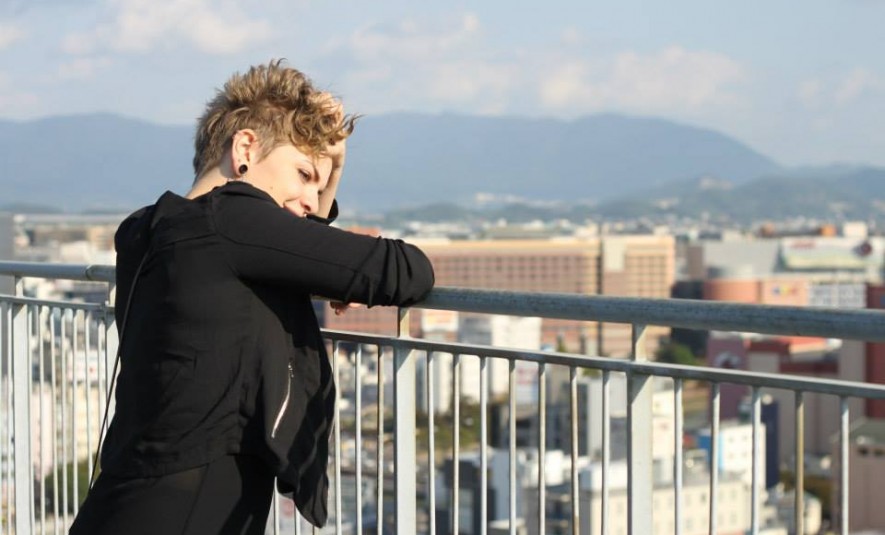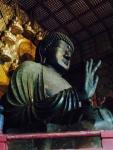
So you think you know sushi? Think again! Eventually you tire of the same, mainstream take on rice and raw fish, but this place will leave you mouthwatering and eager to come back for more! Continue reading


So you think you know sushi? Think again! Eventually you tire of the same, mainstream take on rice and raw fish, but this place will leave you mouthwatering and eager to come back for more! Continue reading
Earlier this month, Tokyo 2020 released the music video accompanying the Tokyo Gorin Ondo song promoting the upcoming Olympics and Paralympics.
The video features many things characteristic of Japanese summer festivals, such as wooden fans, fireworks, bon-like dancing and people wearing yukata, the summer version of kimonos. “I have a good feeling that fun summers are on their way and that this song and the dance can help take our minds off the stresses of daily life,” said Yuichi Kodama, director of the music video.
The song is performed by established Japanese artists Sayuri Ishikawa, Yūzō Kayama and Pistol Takerhara, whom all are featured in the video.
The original Tokyo Gorin Ondo was released in 1964 to promote the Olympics and Paralympics also held in Tokyo. Although still remembered fondly by older people in Japan, the Tokyo 2020 representatives said that they hoped a reproduction of the song, with updated lyrics and a new arrangement would encourage younger generations to engage in the games.
The word Tokyo Gorin Ondo means “Tokyo Olympic Dance”, the latter word ondo being a special kind of traditional dancing in Japan, commonly seen at summer festivals. Throughout the video past and present are bound together to celebrate 56 years since Japan first hosted the Olympic Games.
The video begins with television presenter and sports commentator Ichirō Furutachi narrating a scene from Tokyo’s busiest hub, Shibuya Cross:
“The neighbourhood that seems to be celebrating Halloween all year round, Shibuya, without further ado is acting as if the games are starting today!”
Scenes of Tokyo in the past during the 1964 Olympics flash by and are tied together with images from the present. “From Tokyo Tower to Skytree, the baton has been past on,” says Furutachi, referring to the representative power of both towers. Since its erection in 1958, all the way up until 2012, Tokyo Tower was the tallest structure in Tokyo, and the main landmark of the city before, during and well after the 1964 Olympics. In modern times, the Tokyo Skytree has taken over the role of highest landmark, making it the new memorable sight for athletes and Olympic tourists.
Past and present are tied together again, as a girl wearing a sci-fi suit flies into the scene, only to reveal herself to actually being Japan’s biggest traditional folk singer Sayuri Ichikawa. Surrounded by both Japanese and foreigners wearing specially designed Tokyo 2020 traditional summer kimonos, Ichikawa commence the song in the traditional singing style of Japanese enka and folk music.
“The moon that I saw in Rio De Janero, now illuminates the city sky,” she sings, surrounded by people of various nationalities dancing the Ondo while wearing specially designed Tokyo 2020 Yukata.
The specially designed yukata has also been made available for purchase along with the release of the video. “The common theme of these engagement initiatives this summer is Happy and Peace.” Said Tokyo 2020 President Yoshirō Mori in a promotional event ahead of the release of the song.
The choreography for the Tokyo Gorin Ondo is displayed in the music video, and has also been made available via Tokyo 2020’s website for community event organisers to use. “We have produced these [yukata] in the hope that many people all over the country will wear the Tokyo 2020 summer festival costumes and dance to the song. We hope that people around the world can thus have a glimpse of Japanese culture,” he said.
Watch the Tokyo Gorin Ondo 2020 Music Video here

This gallery contains 1 photo.
Gone, but never forgotten. Human’s adaptability is what has made us the surviving species, and it is the reason why so many of us love to journey out of our comfort zone. You don’t need to live long in a place … Continue reading
Japan! It’s been a while♡
For a number of reasons it took me close to a year to get back here. In between studies and work I managed to slip a weeks worth of holiday into my busy schedule, resulting in me currently writing this blog post from my second furusato; Saga. Here I spent 10 exhilarating months of my life, passing through rice paddies on my way to school, studying Japanese, eating delicious food and making friendships for life. After an exhausting 16 hour trip via Shanghai I arrived at my old host family’s home late last evening, feeling like I had never left it. As the evening ascended into night, so did I into the ofuro.

When the Japanese bathe they rarely just shower. Now a days, virtually all homes in Japan has their own bathtub, but not too many decades ago it was more common for families to go to public baths. Its from these public baths, where many people would get together in the same hot water pool after washing themselves, that the tradition of washing ones body and then ascending into the bathtub derives. Likewise, hot springs (known as onsen) is amongst most Japanese considered a favourite way of spending a day or two off, sometimes resulting in onsen get-aways. My host father’s home town is located in the onsen prefecture Oita, where the number of onsen almost exceeds the number of people. In fact, most citizens in these areas have never tried bathing in anything other than onsen.
Its remarkable that despite being one of the busiest countries in the world, the bathing time of the Japanese is significantly longer than Denmark or UK. The Japanese are used to a life of working, with long hours and little sleep. Perhaps this is why, in a stressful day with little rest, at the very least they set aside the time to bathe and calm down. When I ascended into the hot water yesterday night after more than half a day of travel, and three weeks without an entire day of, I could feel all the tiredness in my body dissolve into the water. In an increasingly digitalised world, the speed with which we move and live each day increase generation by generation, and we often forget to teach our children to stop, look around and breath for a second. However, through the art of bathing the Japanese continue to teach their children this viable lesson. And maybe, rather than their particular diet, the ability to relax properly at the end of the day is why the Japanese continue to have the longest lifespan on average in the world.

It’s a night out in Fukuoka, but you don’t know where to go. Are Daimyo’s clubs too loud for you? Is Nakasu too overly populated by businessmen and mini-skirt bimbos? Are you just desperate for a good quality drink in a … Continue reading

On 2nd February 2015, millions of Japanese men were holding in their hands, chocolate they had received from their sweethearts, as it is custom in Japan on Valentines day. However, Makoto Ayukawa of Sheena & The Rokkets weren’t holding chocolate, but the … Continue reading
Today is the the birthday of the man who invented the Japanese sign language, Mr Tashiro Furukawa. A pioneer in deaf and blind education, he opened Japan’s first Deaf School, which is still open to students in present day and age.
https://www.google.com/doodles/tashiro-furukawas-170th-birthday

In August last year, when I went on a 4-day Kansai trip with my other half Yuka, there was one place in particular she was dying to go to: Kyoto. Despite being the actual Japanese half of our entity, she … Continue reading

On our trip to Kansai, we decided that the first day would be all about Nara! Though Kyoto is internationally known as the temple city and representative of ancient Japan, Nara too carries a long history even older than Kyoto. In … Continue reading